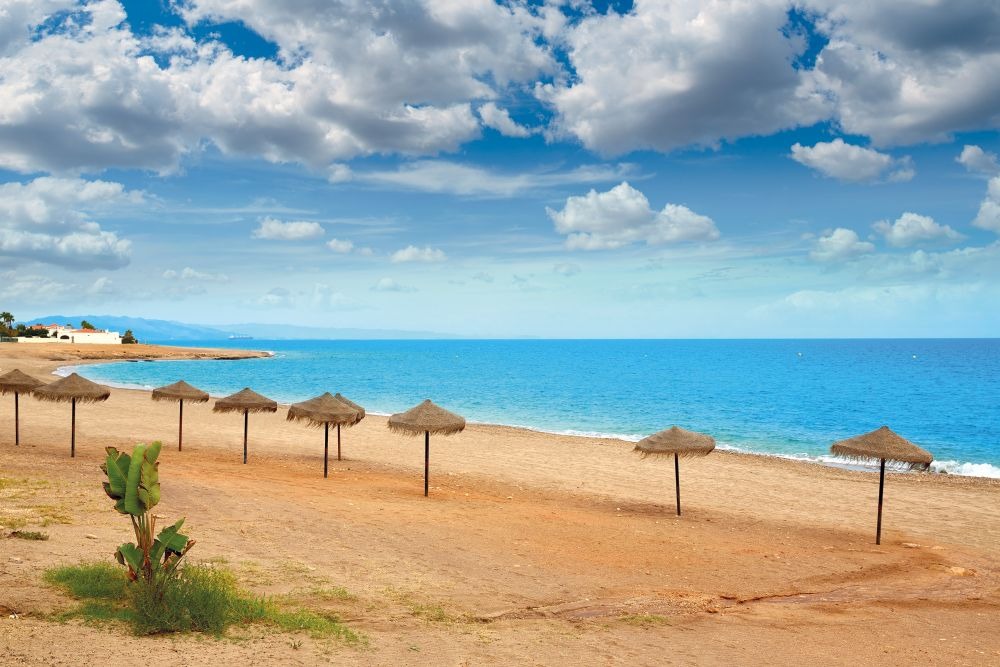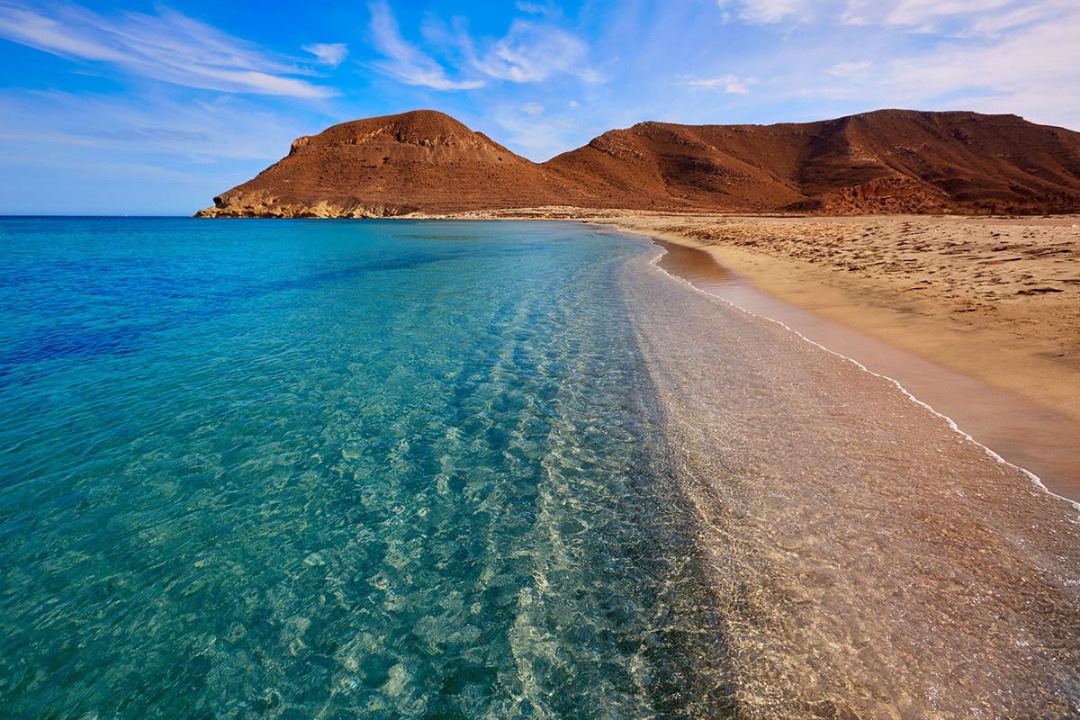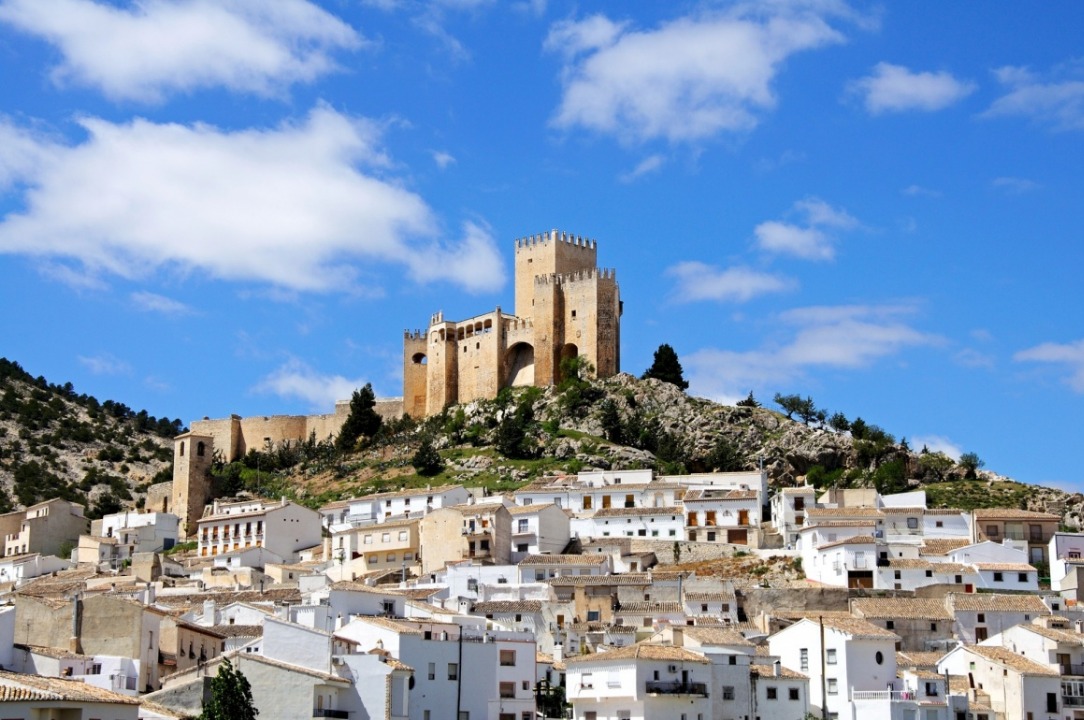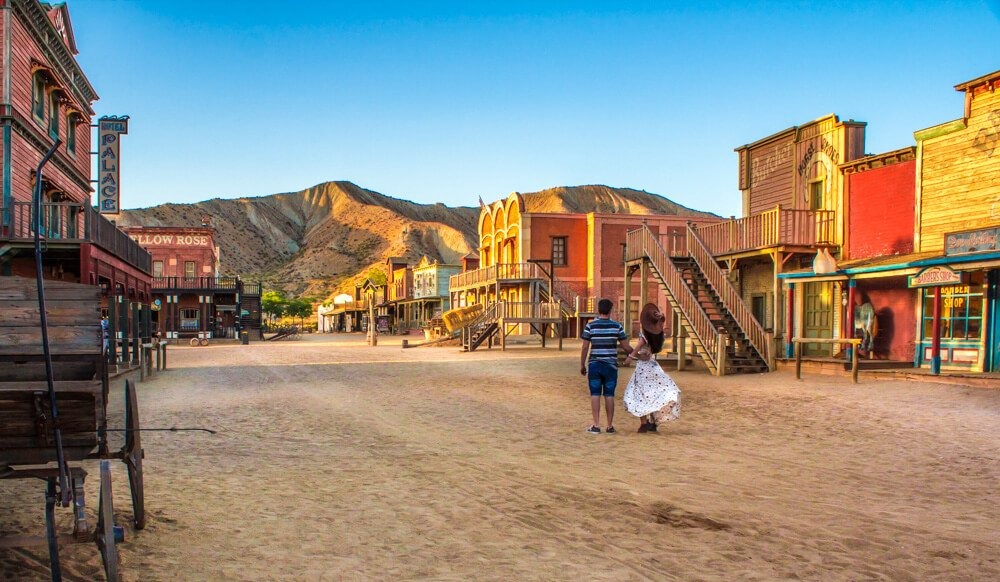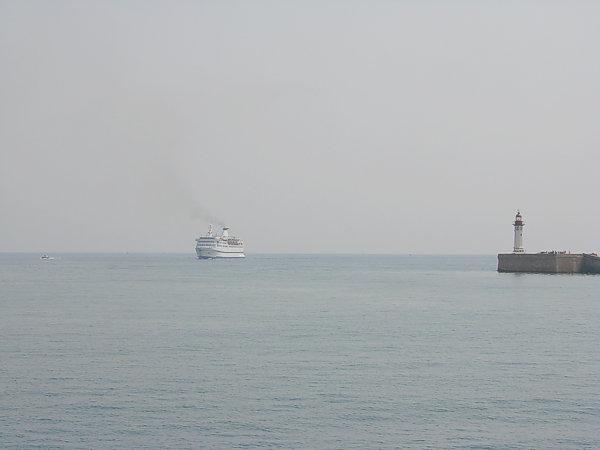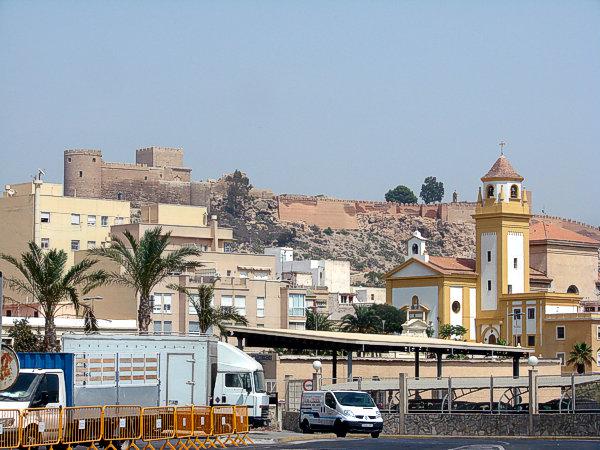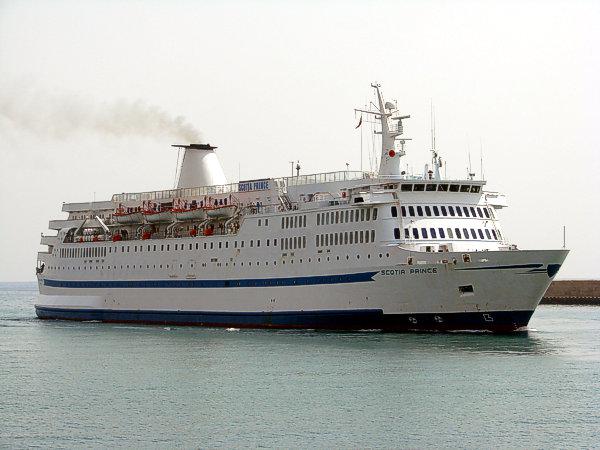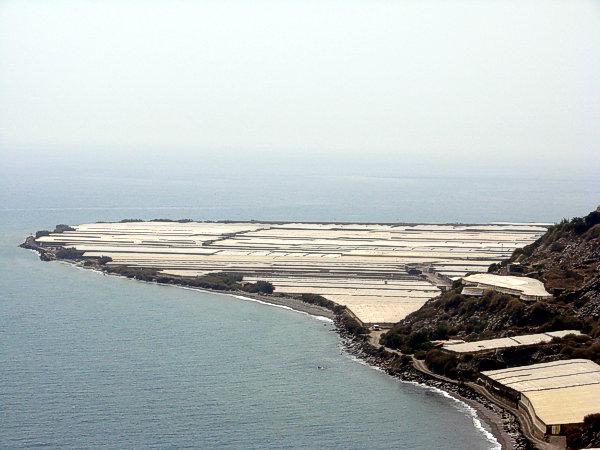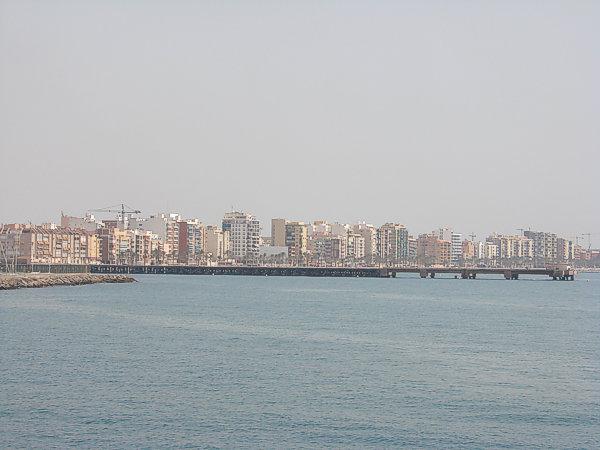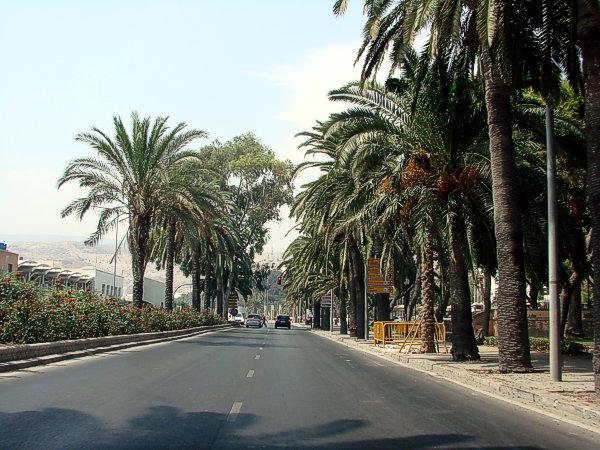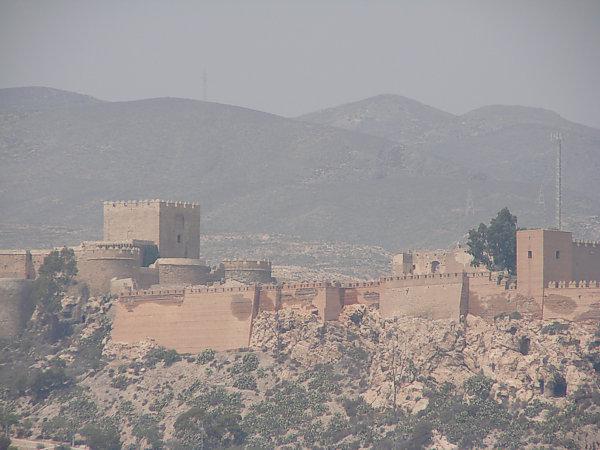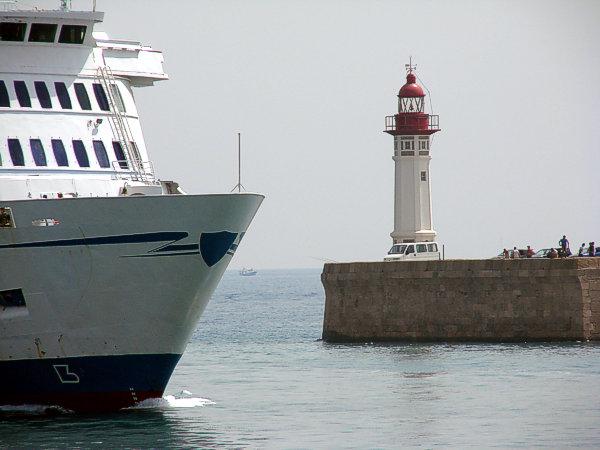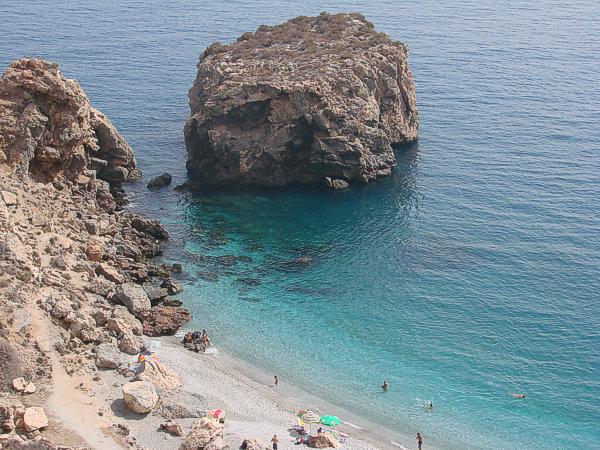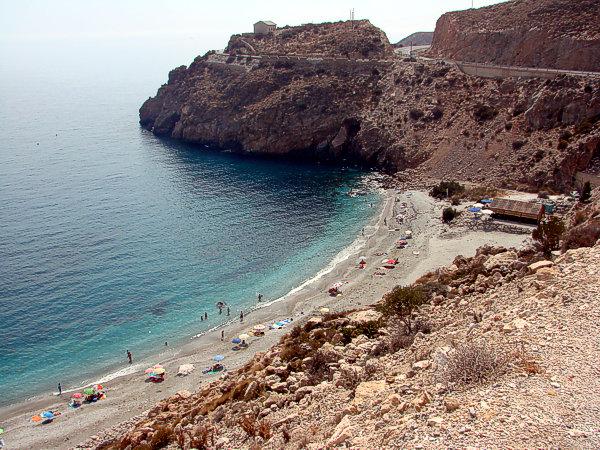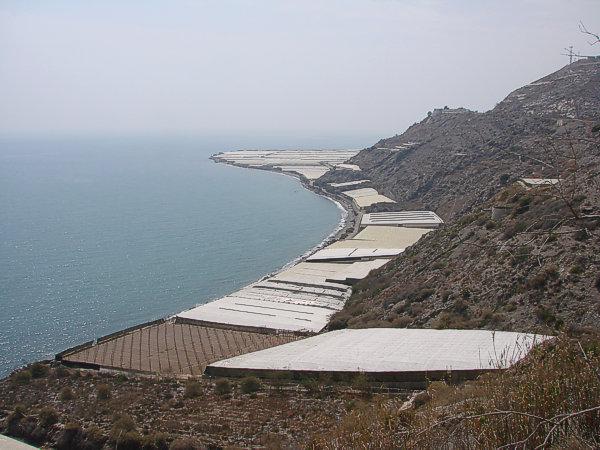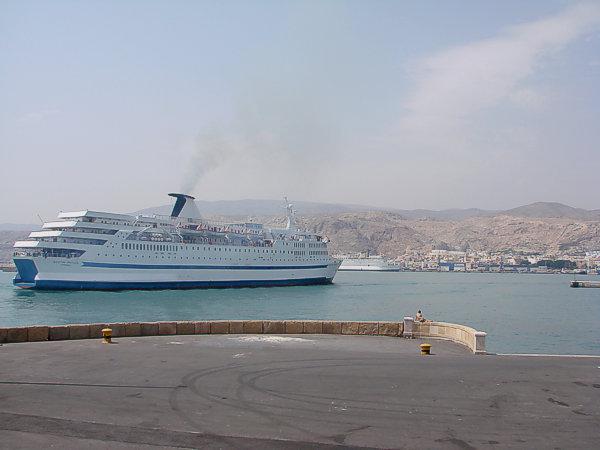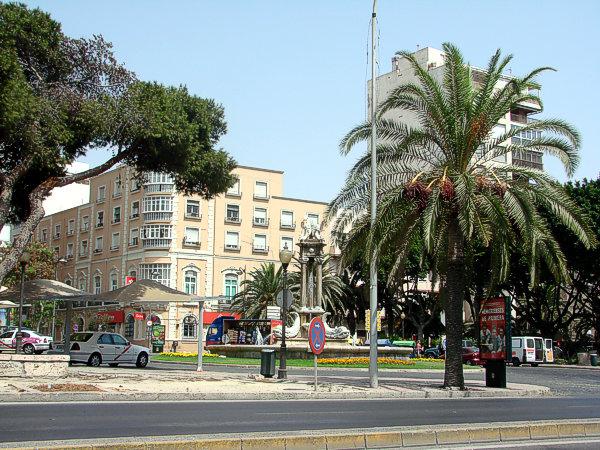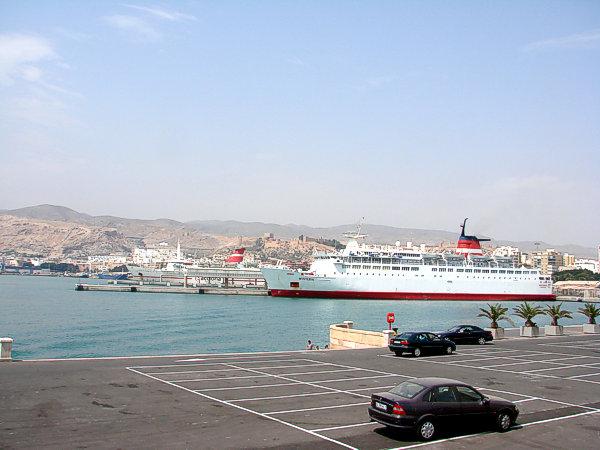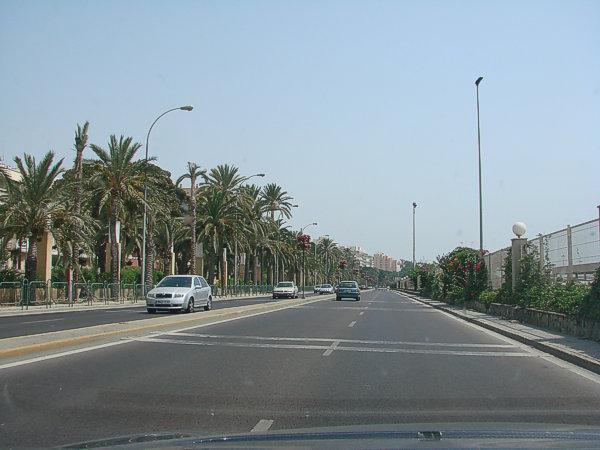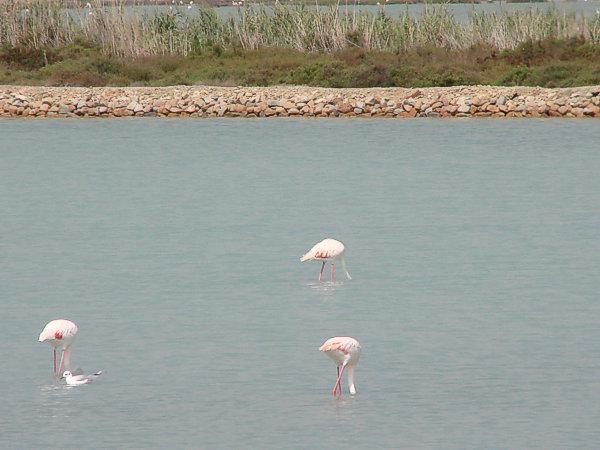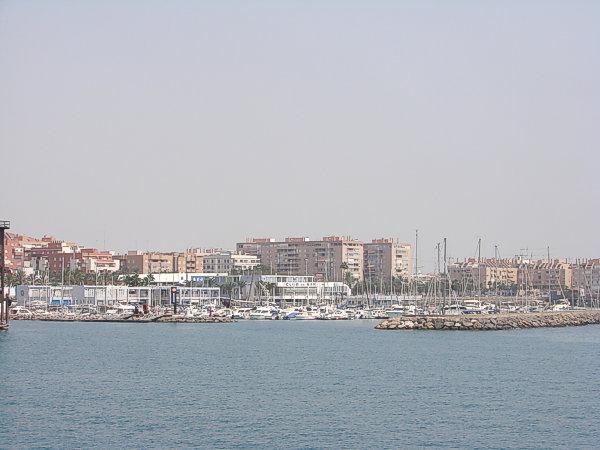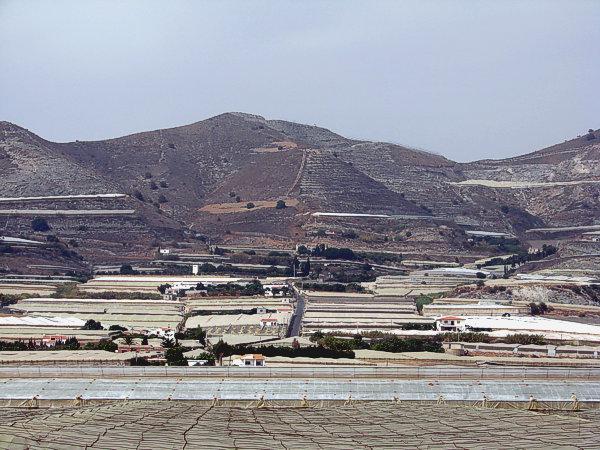Pictures of: Almeria, Andalusia
Location map
Airports
Hotels and other Accommodation
Golf Courses
What to visit
Where to Eat
Where to have fun
World Nomads
The Travel Insurance with the largest coverage

The Travel Insurance with the largest coverage

Almería
Almería is a town in the Andalusia region of Spain, located south-east of Spain in the Mediterranean Sea. It is the capital of the province with the same name.
The city was founded by Calipha Abd-ar-Rahman III of Cordoba in 955 AD.
Almería is both a historic and modern city with some spectacular historical medieval buildings along with some very modern ones.
Its Al-Andalus legacy can be seen everywhere, including the surrounding villages and their cuisine. Surrounded by mountainous territory, it was used to film Spaghetti Westerns in the seventies.
Almería has been inhabited since the Bronze Age, with some ancient caves with paintings on the walls that still exist. The Phoenicians, Romans, Iberians, Carthaginians and Moors occupied Almeria until it finally fell to the Spanish power "Reyes Catolicos" in 1489. A visit to the city offers you the opportunity to visit remnants of all these periods.
The city was founded by Calipha Abd-ar-Rahman III of Cordoba in 955 AD.
Almería is both a historic and modern city with some spectacular historical medieval buildings along with some very modern ones.
Its Al-Andalus legacy can be seen everywhere, including the surrounding villages and their cuisine. Surrounded by mountainous territory, it was used to film Spaghetti Westerns in the seventies.
Almería has been inhabited since the Bronze Age, with some ancient caves with paintings on the walls that still exist. The Phoenicians, Romans, Iberians, Carthaginians and Moors occupied Almeria until it finally fell to the Spanish power "Reyes Catolicos" in 1489. A visit to the city offers you the opportunity to visit remnants of all these periods.
Tourism
Tourism in Almeria is like almost all Spain of quality and diversified.
Two impressive museums, the Almeria Museum and the Art and Center, where you can see huge photos and huge galleries containing art by several famous painters.
La Alcazaba a huge Moorish fortress that once rivaled the Alhambra of Granada for its gardens and palaces.
The Cathedral is in the heart of the Old Town and was rebuilt in 1524 to replace its predecessor destroyed by the 1522 earthquake. The architecture is a combination of Gothic and Renaissance style, its fortress as its appearance was due to constant attacks by North African pirates.
The English Cape was built in 1904 on Almadrabillas beach and is an example of iron architecture since the early 20th century. This structure has been used for a long time to load, transport, store and ship iron ore mined. Alquife in Granada. It was designed by a student of Eiffel who built the famous Eiffel Tower in Paris.
Zapillo, a sidewalk by the sea, invites you to take a stroll near the sea and goes from Zapillo Beach to the University of Almería, where people love to walk, run, skate, etc.
But a self-respecting Spanish city also has its numerous parties and activities, such as the big city party that takes place in the second half of August in honor of Almeria's patron saint, Virgen del Mar. The show lasts 10 days and includes during these days:
Sporting activities, including petanque championship (outdoor backyard sport) or water sports through the harbor.
Bullfighting in the Plaza de Toros de Almería, inaugurated in 1889 famous for the large number of shawls that adorn the square during the race.
The South Fair - With a great atmosphere of bars in the city center where you can enjoy tapas, wine, women dressed in traditional clothes and the unique Sevillian music.
The fireworks, which take place at midnight on Wednesday and Saturday nights.
Equestrian activities, consisting of exhibition of beautiful animals and competitions.
Pottery Fair of the People, usually composed of potters from all over Spain and Portugal.
Evening at the fairgrounds including a plethora of tents and amusement parks.
As is also the case in most Spanish cities and towns, Holy Week is extremely experienced by its inhabitants.
Sculptures of Jesus and the Virgin Mary are displayed by people on the main streets during Holy Week. These sculptures are placed in richly adorned special carriages called "pasos", which are carried on people's shoulders as a kind of penance. Of the most popular pastures in Almería are "The Christ of Forgiveness, Los Estudiantes and El Silencio".
On June 23 at midnight, the night of "San Juan" is a very magical moment. Whole families as well as groups of friends head to Playa del Zapillo y La Termica to set fire to many bonfires along the coast. When the clock strikes twelve, people go to the sea to touch the water with their feet or simply swim. It is said that if it is not there will be no luck. This is followed by fireworks, barbecues, music and dancing until the sun rises.
The "Day of the Pattern" is a celebration that is celebrated in the Spanish city of Almeria, on December 26th where the Catholic Kings' conquest of the city of Almeria is celebrated, an event that took place in the year 1489. On the morning of this day , the town hall celebrates a civic - religious act. Normally, the pattern of kings is through the streets from the center to the Cathedral where the Mass is celebrated in honor of the events of the day.
The city's main beaches, San Miguel, Las Conchas, Zapillo, Palmeral, Termica, Puerto Pino, Nueva Almeria and Playa del Rio, lie in a strip along the western coast of the peninsula, to the more rural beaches stretching to the resorts of El Toyo and Retamar, located on the outskirts of Cabo de Gata Natural Park.
In Almeria, there are many shops in different parts of the city where you can buy anything you want.
Two impressive museums, the Almeria Museum and the Art and Center, where you can see huge photos and huge galleries containing art by several famous painters.
La Alcazaba a huge Moorish fortress that once rivaled the Alhambra of Granada for its gardens and palaces.
The Cathedral is in the heart of the Old Town and was rebuilt in 1524 to replace its predecessor destroyed by the 1522 earthquake. The architecture is a combination of Gothic and Renaissance style, its fortress as its appearance was due to constant attacks by North African pirates.
The English Cape was built in 1904 on Almadrabillas beach and is an example of iron architecture since the early 20th century. This structure has been used for a long time to load, transport, store and ship iron ore mined. Alquife in Granada. It was designed by a student of Eiffel who built the famous Eiffel Tower in Paris.
Zapillo, a sidewalk by the sea, invites you to take a stroll near the sea and goes from Zapillo Beach to the University of Almería, where people love to walk, run, skate, etc.
But a self-respecting Spanish city also has its numerous parties and activities, such as the big city party that takes place in the second half of August in honor of Almeria's patron saint, Virgen del Mar. The show lasts 10 days and includes during these days:
Sporting activities, including petanque championship (outdoor backyard sport) or water sports through the harbor.
Bullfighting in the Plaza de Toros de Almería, inaugurated in 1889 famous for the large number of shawls that adorn the square during the race.
The South Fair - With a great atmosphere of bars in the city center where you can enjoy tapas, wine, women dressed in traditional clothes and the unique Sevillian music.
The fireworks, which take place at midnight on Wednesday and Saturday nights.
Equestrian activities, consisting of exhibition of beautiful animals and competitions.
Pottery Fair of the People, usually composed of potters from all over Spain and Portugal.
Evening at the fairgrounds including a plethora of tents and amusement parks.
As is also the case in most Spanish cities and towns, Holy Week is extremely experienced by its inhabitants.
Sculptures of Jesus and the Virgin Mary are displayed by people on the main streets during Holy Week. These sculptures are placed in richly adorned special carriages called "pasos", which are carried on people's shoulders as a kind of penance. Of the most popular pastures in Almería are "The Christ of Forgiveness, Los Estudiantes and El Silencio".
On June 23 at midnight, the night of "San Juan" is a very magical moment. Whole families as well as groups of friends head to Playa del Zapillo y La Termica to set fire to many bonfires along the coast. When the clock strikes twelve, people go to the sea to touch the water with their feet or simply swim. It is said that if it is not there will be no luck. This is followed by fireworks, barbecues, music and dancing until the sun rises.
The "Day of the Pattern" is a celebration that is celebrated in the Spanish city of Almeria, on December 26th where the Catholic Kings' conquest of the city of Almeria is celebrated, an event that took place in the year 1489. On the morning of this day , the town hall celebrates a civic - religious act. Normally, the pattern of kings is through the streets from the center to the Cathedral where the Mass is celebrated in honor of the events of the day.
The city's main beaches, San Miguel, Las Conchas, Zapillo, Palmeral, Termica, Puerto Pino, Nueva Almeria and Playa del Rio, lie in a strip along the western coast of the peninsula, to the more rural beaches stretching to the resorts of El Toyo and Retamar, located on the outskirts of Cabo de Gata Natural Park.
In Almeria, there are many shops in different parts of the city where you can buy anything you want.
Gastronomy
The menus of the restaurants serving national cuisine are truly appreciated by travelers who enjoy seafood, gazpacho and delicious wine.
Fried fish is particularly popular in the city. As a general rule, the fish is fried in olive oil and this makes the dish especially fragrant. Often chefs put fish fillet in "la andaluza" chickpea flour before frying it. This makes the fish look especially delicious and crispy. Flounder is the typical ingredient for the preparation of many fish dishes.
The clams are also very respected here and local chefs easily use shrimps, squids, anchovies and squids in their blacks.
Fans of exotic dishes should try the dish called "Bocas de la Isla" which is a crab meat stew delivered to restaurants by local fishermen.
Various vegetable salads and stews are great additions to the delicious seafood.
Some restaurants offer olives as starters as they are known as one of the most popular local snacks.
Fans of meat dishes can enjoy the excellent Iberian ham and bull tail. No meal can be imagined without the delicious Spanish wines. Restaurants in Andalusia offer wines imported from Jerez, Sanlucar de Barrameda, Condado, Cadiz, Malaga and Cordoba. Many large restaurants have their own wineries, which store a wide range of wines, including rare collection types.
Fried fish is particularly popular in the city. As a general rule, the fish is fried in olive oil and this makes the dish especially fragrant. Often chefs put fish fillet in "la andaluza" chickpea flour before frying it. This makes the fish look especially delicious and crispy. Flounder is the typical ingredient for the preparation of many fish dishes.
The clams are also very respected here and local chefs easily use shrimps, squids, anchovies and squids in their blacks.
Fans of exotic dishes should try the dish called "Bocas de la Isla" which is a crab meat stew delivered to restaurants by local fishermen.
Various vegetable salads and stews are great additions to the delicious seafood.
Some restaurants offer olives as starters as they are known as one of the most popular local snacks.
Fans of meat dishes can enjoy the excellent Iberian ham and bull tail. No meal can be imagined without the delicious Spanish wines. Restaurants in Andalusia offer wines imported from Jerez, Sanlucar de Barrameda, Condado, Cadiz, Malaga and Cordoba. Many large restaurants have their own wineries, which store a wide range of wines, including rare collection types.
Weather
Almería has one of the sunniest, warmest and driest climates in Europe.
Almería enjoys about 3000 hours of sunshine a year, with about 320 sunny days a year on average (6 hours of sunshine in January and 12 in August).
Almería has an average annual temperature around 19 ° C (66 ° F) and only 25 to 30 wet days a year on average. During winter, daily maximum temperatures tend to be around 14 to 20 ° C (57 to 68 ° F). During the hottest month, August, the skies are clear, sunny and without rain. This means that one can swim in the sea possibly at almost any time of the year.
Almería enjoys about 3000 hours of sunshine a year, with about 320 sunny days a year on average (6 hours of sunshine in January and 12 in August).
Almería has an average annual temperature around 19 ° C (66 ° F) and only 25 to 30 wet days a year on average. During winter, daily maximum temperatures tend to be around 14 to 20 ° C (57 to 68 ° F). During the hottest month, August, the skies are clear, sunny and without rain. This means that one can swim in the sea possibly at almost any time of the year.
Other tourist destinations in:
Spain
Spain
Other world tourist destinations
Why to book with TOURISTIC ROUTES
The best prices
Our partnerships with the world´s largest operators offer research on the best market prices.
More options
At Rotas Turisticos you can book the hotel, buy the air ticket, book the transfer from the airport to the hotel and vice versa, book the local excursions, rent the car, take travel insurance and consult the places to visit and where to go.
Holiday Tips & Destinations
Hundreds of holiday destinations with all the options that allow you to easily choose the destination that best suits your dream vacation.
TOURISTIC ROUTES
Links

